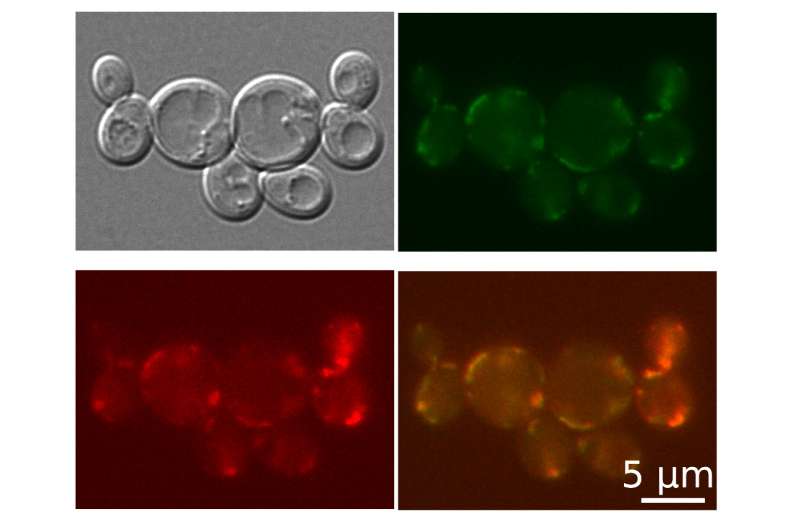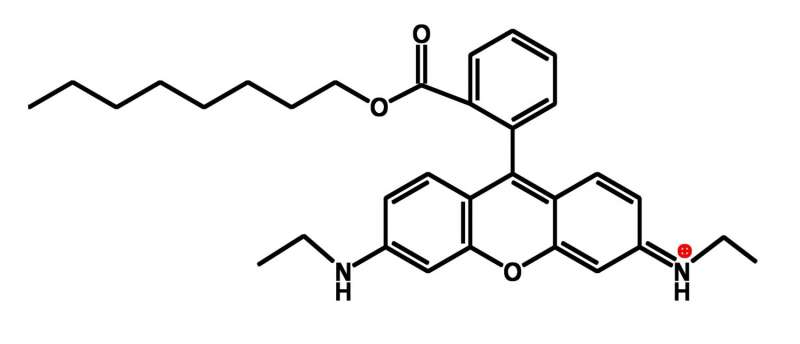Scientists discover how to deal with fungal resistance to antimycotic drugs

Research scientists from the Lomonosov Moscow State University have suppressed the resistance of fungi to antifungal drugs. The results of this work could serve as a basis for the development of effective antifungal pharmaceuticals, and have been published in the journal FEMS Yeast Research.
Increasingly, scientists are finding strains of pathogenic fungi resistant to known antimycotics (antifungal drugs). 'There are quite a lot of different antifungals. The most common targets are ergosterol biosynthesis pathways. Ergosterol is localized in the fungal plasma membrane and is similar to and performs the same functions as cholesterol in animal cells. Antifungals disrupt the biosynthesis of ergosterol, thereby suppressing the vital functions of the fungal cells while causing no significant harm to animal cells,' says Dmitry Knorre, a senior researcher at the Department of Molecular Energy of microorganisms, A.N. Belozersky Institute of Physico-Chemical Biology, the Lomonosov Moscow State, and the first author of the study. In addition, Dmitry Knorre is the author of a popular board game Evolution.
Mutations leading to drug resistance allow pathogenic fungi to survive the action of antimycotics. Therefore, fungal strains with such mutations are actively spreading, displacing less 'lucky' ones. Some mutations provide resistance just to a particular antifungal compound, whereas others protect from a whole range of antimycotics. This is called "multidrug resistance." Usually, it is associated with excessive activation of the so-called ATP binding cassette (ABC) transporters. ABC transporters are membrane enzymes pumping unwanted substances from the cells. Typically, the cellular transporters are working with a limited set of molecules, but some of them may protect the cells from large numbers of the compounds. The work describes an approach that makes the work of such ABC transporters ineffective to prevent their interference with the delivery of the antifungal agents into the cells.

The experiments were conducted on cells of baker's yeast, a common fungal model object. Fluorescent dyes were added to the cells, along with fungi-toxic compounds (e.g., Clotrimazole). The dyes were alkyl-rhodamines, which can be easily tracked inside or outside the cells by measuring their fluorescence. This information is important as hydrophobic alkyl-rhodamine molecules are absorbed effectively by a cell membrane. At the same time, the absorbtion is opposed by ABC transporter activity, which acts to extrude the xenobiotics from the cells. Pdr5p protein is one such transporter. It has been shown by the scientists to play a key role in pumping out alkyl rhodamines from yeast cells. Scientists have tried to trace how the distribution of the dyes correlates with their ability to 'help' the drug to kill the fungus.
'Cell viability is determined as follows: If the cell suspension is supplemented with antimycotic and then transferred to a solid medium, after a while, the surviving cells form colonies that can be counted. As a result, one can estimate the efficiency of the drug composition,' says Dmitry Knorre.
The research team found that octyl-rhodamine was the most effective among the tested dyes—it outperformed all others in increasing the effects of the conventional antifungals. The scientists also explained how this happens. Alkyl rhodamines are actively ejected by the ABC transporters from the cells, but as these compounds are extremely hydrophobic, they are immediately captured again. As a result, ABC transporters are deceived: They are fully engaged in pumping out alkylated rhodamines, so they have no capacity to pump such detrimental drugs as Clotrimazole.
'In the future, it will probably be possible to find a similar colorless compound for pharmacological purposes—another alkylated penetrating cation,' says Dmitry Knorre.
Thus, the scientists discovered how to force the fungi to "forget" about the presence of the medication and fight decoys such as alkylated rhodamines instead. Further research in this area will certainly help to improve antifungal drug composition.
More information: Dmitry A. Knorre et al, Alkylrhodamines enhance the toxicity of clotrimazole and benzalkonium chloride by interfering with yeast pleiotropic ABC-transporters, FEMS Yeast Research (2016). DOI: 10.1093/femsyr/fow030
Provided by Lomonosov Moscow State University

















